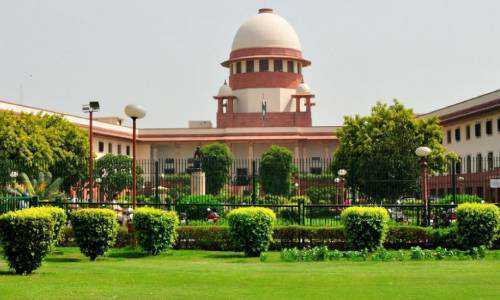
In its ruling dated October 27, 2020 in the case of M/s L&T Housing Finance Limited v. M/s Trishul Developers and Another [Civil Appeal No. 3413 OF 2020], the Supreme Court ("SC") stated that proceedings under the Securitization and Reconstruction of Financial Assets and Enforcement of Securities Interest Act, 2002 ("SARFAESI Act"), initiated by secured creditors, could not be thrown out due to minor procedural errors and technical errors unless significant changes were caused to the defaulter.
In the instant case titled L&T Housing Finance Limited v. Trishul Developers and Another, the issue raised for clarification before the Apex Court was:
Considering a technical error in the application, might the appellant continue proceedings under the SARFAESI Act?
With regard to this issue, The SC held that the Respondent's argument that the Demand Notice under Section 13(2) of the SARFAESI Act was served by an authorised signatory of "L&T Finance Ltd.," who was not the actual secured creditor, was completely without merit, because both "L&T Finance Ltd." and "L&T Housing Finance Ltd." were the businesses that, in correspondence with all of their clients, used a common letterhead with the same logo. Aside from the technical objection in the Demand Notice under Section 13(2) of the SARFAESI Act, there was no need for the HC to intervene in the limited scope of judicial review when there was no confusion in the case of the Respondent regarding the action being initiated in the current case or any substantial prejudice being caused. Because of this, the SC believed that the HC's decision was invalid and should be overturned. As a result, the HC Order was reversed.
The Court categorically stated that,
“More so, when it is not the case of the respondents that there was any iota of confusion in their knowledge regarding the action being initiated in the instant case other than the secured creditor under the Sarfaesi Act for non-fulfilment of the terms and conditions of the facility agreement dated 11-8-2015 or any substantial prejudice being caused apart from the technical objection being raised while the demand notice under Section 13(2) was served under the Sarfaesi Act or in the proceedings in furtherance thereof no interference by the High Court in its limited scope of judicial review was called for. Consequently, in our view, the judgment 2019 SCC OnLine Kar 684 , (2019) 201 AIC 469 of the High Court is unsustainable and deserves to be set aside.”
The SC's ruling, in this case, ought to discourage loan defaulters from trying to stall and delay secured creditors' efforts to collect from them on petty and technical grounds. This conclusion is justified by the reasoning that the judiciary should not consider such applications under Section 17 of the SARFAESI Act unless severe harm or prejudice has been done to the defaulter under the proceedings as a result of such procedural failure.

